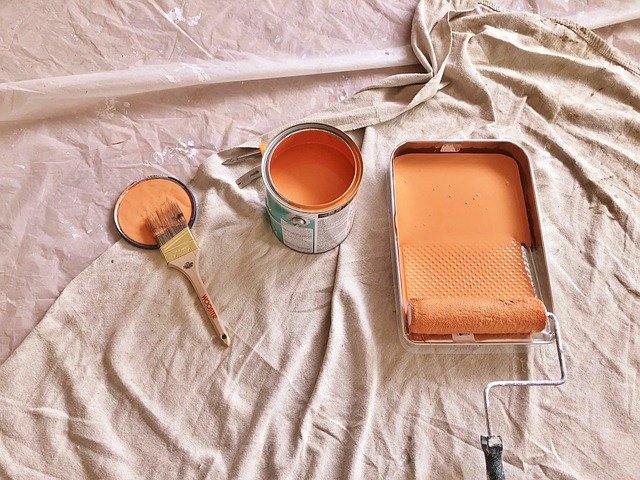A Complete Guide to Selection and Installation
Decorative wall coverings have become an increasingly popular choice for homeowners and businesses looking to enhance interior spaces with style and functionality. These versatile design elements offer quick installation, durability, and a wide range of aesthetic options. Whether you're renovating a single room or transforming an entire property, understanding the types, materials, and installation processes can help you make informed decisions that align with your budget and design vision.

What Are Decorative Wall Coverings and Why Choose Them?
Decorative wall coverings are prefabricated sections designed to cover interior or exterior walls, providing both aesthetic appeal and practical benefits. Unlike traditional paint or wallpaper, these coverings offer enhanced durability, insulation properties, and easier maintenance. They come in various materials including wood, PVC, MDF, metal, and composite materials, each serving different functional and aesthetic purposes. Homeowners appreciate these solutions for their ability to hide imperfections, reduce noise, and add texture to bland spaces. Commercial settings benefit from their easy cleaning and professional appearance. The installation process is generally faster than traditional wall treatments, making them an efficient choice for renovation projects with tight timelines.
Wall Panels Guide: Understanding Different Types and Materials
Navigating the world of wall coverings requires understanding the distinct characteristics of available materials. Wood options, including solid hardwood and engineered varieties, bring warmth and natural beauty to spaces but require proper sealing in moisture-prone areas. PVC coverings offer excellent water resistance, making them ideal for bathrooms and kitchens, while remaining budget-friendly and low-maintenance. MDF products provide smooth surfaces perfect for painting and are commonly used in decorative applications. Metal options, often aluminum or steel, suit industrial or modern design aesthetics and offer exceptional durability. 3D textured varieties have gained popularity for creating focal walls with dimensional interest. Each material type comes with specific installation requirements, weight considerations, and longevity expectations. Understanding these differences helps match selection to room function, environmental conditions, and design goals.
How to Buy Wall Panels: Key Considerations
When preparing to purchase wall coverings, several factors influence the decision-making process. First, accurately measure your wall space, accounting for windows, doors, and electrical outlets to determine quantity needs. Consider the room’s purpose and moisture levels, as bathrooms require different materials than living rooms or bedrooms. Evaluate your skill level for installation, some systems feature interlocking designs suitable for DIY projects, while others require professional installation. Research local suppliers, home improvement stores, and online retailers to compare selection and availability. Request samples when possible to assess texture, color accuracy, and quality before committing to large orders. Check manufacturer specifications for fire ratings, environmental certifications, and warranty coverage. Budget planning should include not only material costs but also necessary adhesives, trim pieces, tools, and potential installation fees. Reading customer reviews provides insight into real-world performance and installation challenges.
Wall Panels Info: Installation Methods and Best Practices
Successful installation depends on proper preparation and technique. Begin by ensuring walls are clean, dry, and relatively smooth, repairing significant damage before application. Three primary installation methods exist: adhesive application, mechanical fastening with nails or screws, and track systems. Adhesive methods work well for lightweight materials on smooth surfaces, while mechanical fastening suits heavier options or uneven walls. Track systems allow for easier removal and replacement. Always start installation from a corner or central focal point, working systematically across the wall. Use a level frequently to maintain alignment and prevent cumulative errors. Cut materials carefully using appropriate tools, measuring twice before each cut. Allow products to acclimate to room temperature and humidity for 24 to 48 hours before installation to prevent warping. Seal edges and seams as recommended by manufacturers, especially in moisture-prone areas. Proper ventilation during and after installation helps adhesives cure correctly.
Cost Considerations and Pricing Overview
Understanding the financial investment required for wall covering projects helps with planning and budgeting. Prices vary significantly based on material type, quality, brand, and quantity purchased. Basic PVC options typically range from 1 to 5 dollars per square foot, while premium wood varieties can cost 10 to 30 dollars per square foot or more. MDF products generally fall in the 3 to 8 dollar range per square foot. 3D decorative options often command higher prices, from 5 to 20 dollars per square foot depending on complexity and material. Installation costs add another layer, with professional services charging 2 to 6 dollars per square foot for labor, though this varies by region and project complexity. Additional expenses include adhesives, trim pieces, tools, and potential wall preparation work.
| Material Type | Price Range per Sq Ft | Durability | Best Use Case |
|---|---|---|---|
| PVC Options | 1 to 5 dollars | High moisture resistance | Bathrooms, kitchens |
| MDF Products | 3 to 8 dollars | Moderate, needs sealing | Living rooms, bedrooms |
| Wood Varieties | 10 to 30 dollars | High with proper care | Accent walls, offices |
| 3D Decorative | 5 to 20 dollars | Varies by material | Feature walls |
| Metal Options | 8 to 25 dollars | Very high | Commercial, modern designs |
Prices, rates, or cost estimates mentioned in this article are based on the latest available information but may change over time. Independent research is advised before making financial decisions.
Maintenance and Long-Term Care
Proper maintenance extends the lifespan and appearance of wall coverings significantly. Most products require only regular dusting or wiping with a damp cloth for routine cleaning. PVC and metal options tolerate more aggressive cleaning methods, while wood varieties need gentle care to preserve finishes. Avoid harsh chemicals that might damage protective coatings or cause discoloration. Inspect surfaces periodically for loose sections, especially in high-traffic areas, and reattach as needed. In humid environments, monitor for signs of moisture damage or mold growth, addressing issues promptly to prevent spreading. Wood options may benefit from occasional conditioning or resealing depending on the finish type. Repair minor scratches or dents using manufacturer-recommended touch-up products. For textured or 3D varieties, use soft brushes or vacuum attachments to remove dust from crevices. Proper care maintains both aesthetic appeal and structural integrity, protecting your investment for years.
Choosing the Right Options for Your Space
Selecting appropriate wall coverings involves balancing aesthetic preferences with practical requirements. Consider the overall design style of your home, modern spaces might favor sleek PVC or metal options, while traditional interiors benefit from wood varieties. Evaluate lighting conditions, as some materials reflect light differently and can affect room ambiance. Think about long-term plans, permanent installations warrant higher-quality materials, while temporary solutions allow for budget-friendly choices. Environmental consciousness might guide you toward sustainable materials with low VOC emissions and recyclable components. Color and texture selection should complement existing furnishings and architectural features rather than compete with them. Sample testing in actual room conditions reveals how products appear under specific lighting and alongside current decor. Professional design consultation can provide valuable perspective when making final selections, ensuring cohesive results that enhance property value and personal enjoyment.



